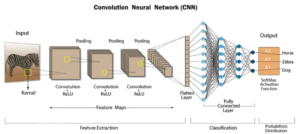Neural networks have revolutionized the field of artificial intelligence and are now powering groundbreaking advancements in various fields like image recognition, natural language processing, and robotics. Despite their growing impact, these complex systems can be intimidating for beginners. This article serves as a beginner’s guide to understanding the key concepts and unlocking the potential of neural networks.
What are Neural Networks?
Inspired by the structure and function of the human brain, neural networks are computational models consisting of interconnected nodes called neurons. These neurons work together to process and analyze information, enabling the network to learn and adapt without explicit programming.
Key Components of a Neural Network:
-
Neurons: The building blocks of a neural network, receiving inputs, performing calculations, and transmitting outputs.
-
Connections: Links between neurons that carry signals and determine the strength of influence between them.
-
Layers: Groups of neurons organized together, typically consisting of:
- Input Layer: Receives the raw data.
- Hidden Layers: Perform complex computations and extract features from the data.
- Output Layer: Generates the final predictions or outputs.
-
Activation Function: Introduces non-linearity to the network, allowing it to learn complex relationships between inputs and outputs.
-
Learning Algorithm: Updates the weights of connections between neurons based on the training data and a chosen optimization algorithm.
Types of Neural Networks:
- Multilayer Perceptrons (MLPs): The simplest type of neural network, suitable for linear and non-linear regression and binary classification.
- Convolutional Neural Networks (CNNs): Specialized for processing grid-like data like images, using convolutional filters to extract features.
- Recurrent Neural Networks (RNNs): Designed for sequential data like text and speech, capable of capturing long-range dependencies.
How do Neural Networks Learn?
Neural networks learn through a process called training, which involves:
- Feeding the network with training data: Each data point consists of inputs and corresponding desired outputs.
- Calculating the network’s output: The network processes the input data through its layers and generates an output.
- Comparing the output with the desired output: The difference between the two is calculated as the loss.
- Updating the network’s weights: The learning algorithm adjusts the weights of connections based on the loss, aiming to minimize it over time.
This process is repeated iteratively until the network reaches a desired level of performance.
Applications of Neural Networks:
- Image recognition: Identifying objects and scenes in images.
- Natural language processing: Machine translation, sentiment analysis, and text generation.
- Speech recognition and synthesis: Converting speech to text and vice versa.
- Medical image analysis: Detecting diseases and abnormalities in medical images.
- Self-driving cars: Recognizing objects and navigating in road environments.
Conclusion:
Understanding the basics of neural networks opens doors to a world of possibilities. By grasping their structure, learning process, and diverse applications, you gain a valuable foundation for further exploration and potential contributions to this transformative technology.



